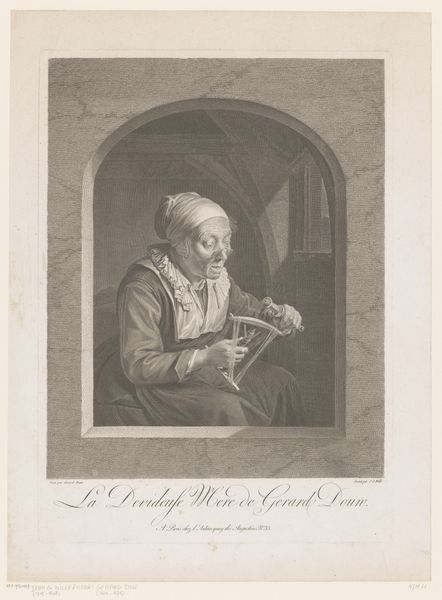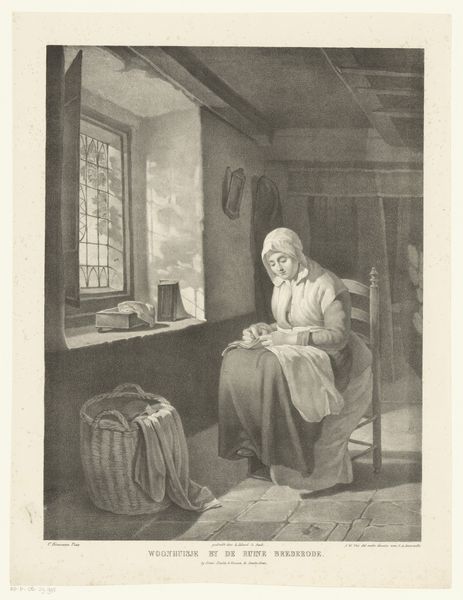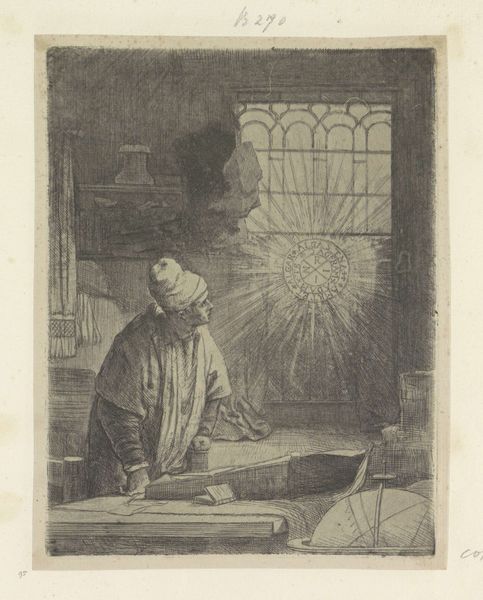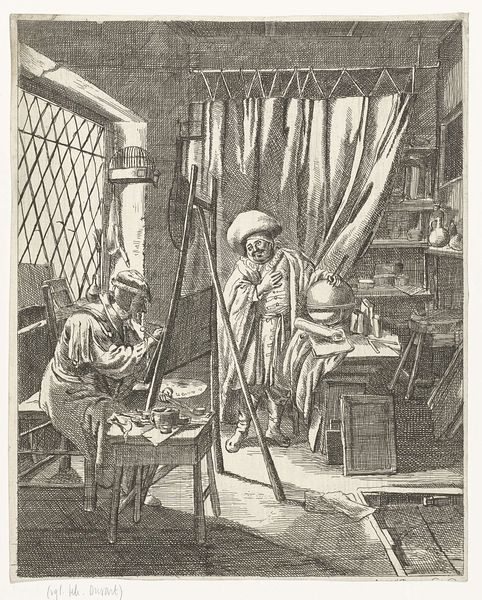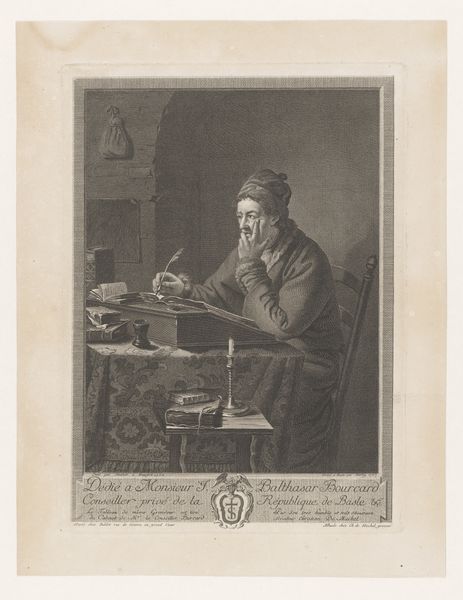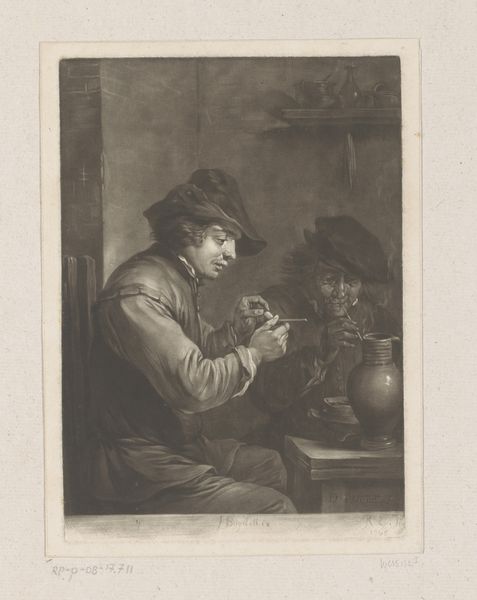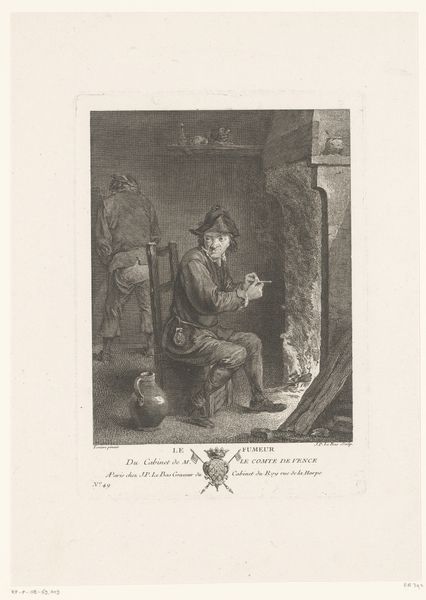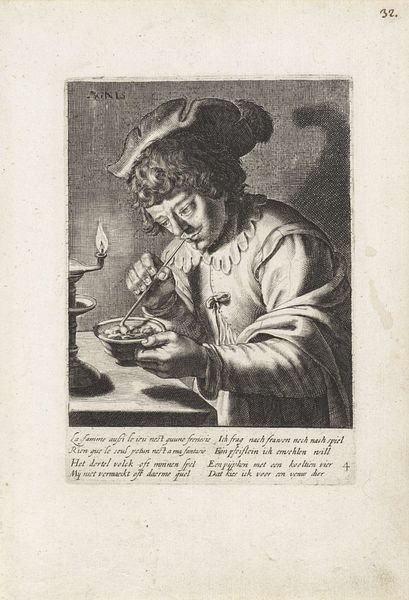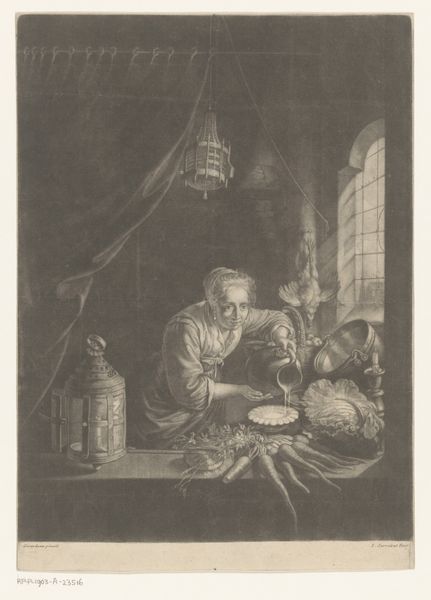
Dimensions: height 358 mm, width 259 mm
Copyright: Rijks Museum: Open Domain
Curator: This delicate drawing, likely dating sometime between 1727 and 1765, is called “Dienstmeid werkt bij kaarslicht.” It’s attributed to Valentin Daniel Preissler, and seems to be rendered with a light touch of pencil and ink on paper, culminating in an engraving or print. It really captures a slice of life from the period. Editor: There’s such a stark simplicity to it, wouldn't you agree? A lone figure illuminated by a single candle, casting long shadows... it’s undeniably intimate, though melancholy. Almost like a poem dipped in sepia tones. Curator: I see that, definitely. It resonates on a few levels, I think. Genre painting—with a hint of history—speaking to daily labor. Consider the time; a woman working by candlelight. It's a stark image of the lives of the working class and, implicitly, the social and gendered divisions of labor. Editor: Precisely. This is also a potent comment on access to time, luxury, and visibility. Who gets to rest when the sun goes down? It asks what labor is worth, whose labor goes unacknowledged. Curator: Absolutely, it’s asking questions about who is remembered in history and who isn't, and what constitutes a worthy subject of art. Plus, Preissler has these baroque and Northern Renaissance elements dancing together – see the detailed rendering but also the almost Romantic focus on feeling? The engraving and printmaking would have created more access and wider circulation of such sentiments. Editor: Indeed. This piece allows us to examine domestic labor, reproductive labor, the historical implications of craft and work, as well as the interplay between women and time under patriarchal structures. It prompts critical questions. Curator: Ultimately, art reminds us that what seems mundane and commonplace is also saturated with untold significance and resilience. This simple engraving of everyday life gives an intriguing sense of history—and humanity—of women in early 18th century Germany. Editor: It’s like a visual archive whispered onto paper; quiet, yet persistently resonant with implications for historical memory and today's social dynamics. A delicate moment capturing volumes about then...and now.
Comments
No comments
Be the first to comment and join the conversation on the ultimate creative platform.

